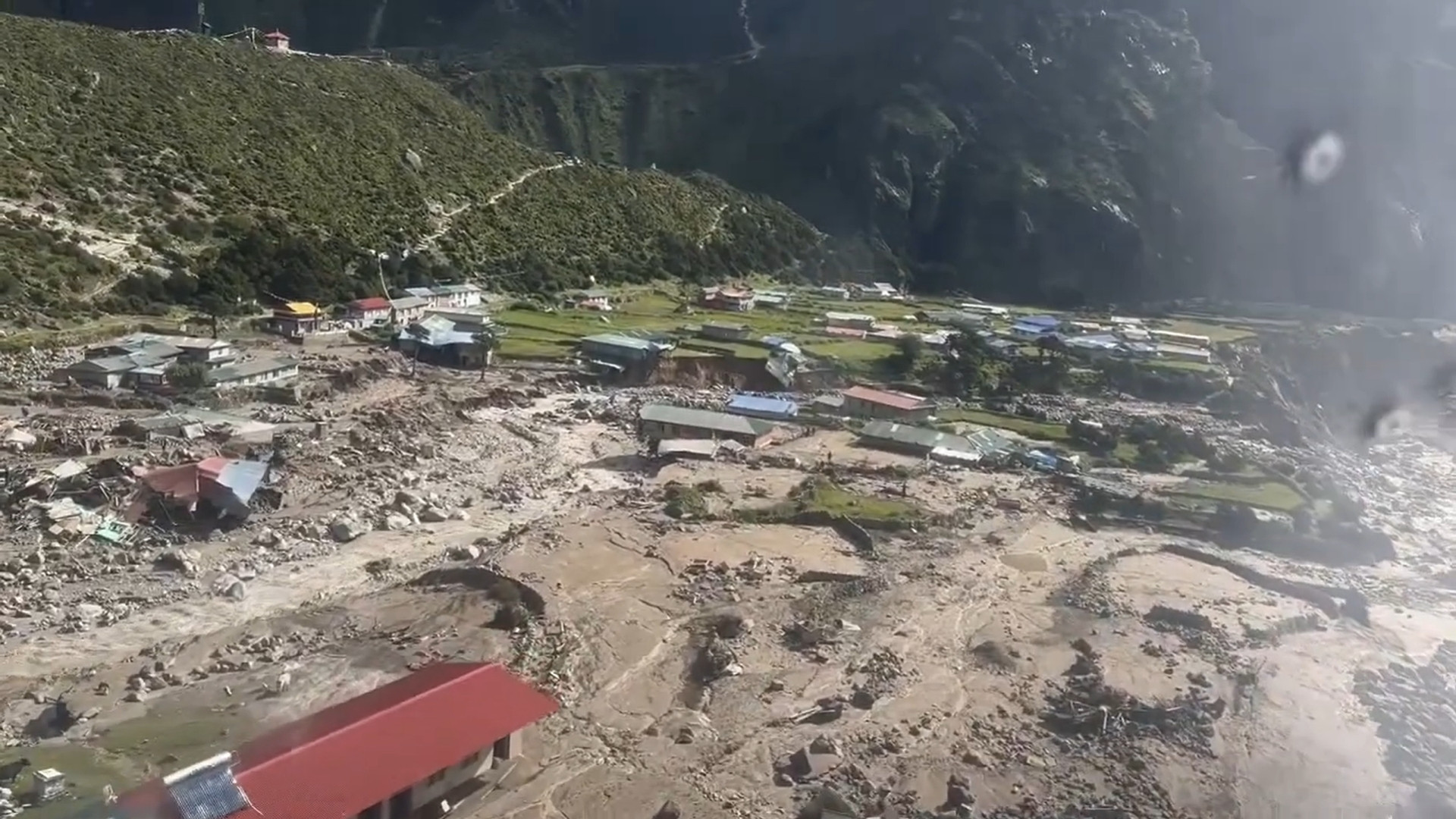Climate-induced disaster | Glacial lake outburst flood | Disaster Risk | Climate-vulnerable country

A study report on the flood caused by the outburst of a glacial lake in the upper area of Thamekhola watershed of Khumbu Pasang Lhamu Rural Municipality-5 in Solukhumbu district has been made public.
On August 16, 2024, Thyanbo glacial lake outburst flood (GLOF) swept away Thame village in the Khumbu region of Solukhumbu district, displacing 135 people.
Stating that such natural risks of climate-induced disasters persist, the report suggested necessary initiatives to mitigate them.
Executive Chief of the NDRRMA, Dinesh Prasad Bhatta, said that the glacial lakes in Thame and other places are at risk of exploding and discussions were necessary on reducing this risk.
“There is a need to conduct a detailed study on the potential risks. There is a need to learn lessons from the past and move forward by coordinating on how to minimise the damage in the coming days,” he said and suggested holding discussions on how the human settlements at risk could be made safe.
NDRRMA Joint Secretary Arjun Kumar Bam stressed the need for extensive preparations on how to be safe, saying the risk of GLOF remains in Thame.
“We will also coordinate with the concerned stakeholders to install early warning systems in the coming days for risk reduction. There will be no compromise on the reconstruction of disaster-resilient private houses. Along with this, we will also give priority to studies and prepare for it,” he added.
Khumbu Pasang Lhamu Rural Municipality Chair Mingma Chhiri Sherpa urged the federal government to complete the reconstruction of settlements and other damaged physical infrastructures on time and restore them to their original condition.
“As they say, justice delayed is justice denied. Thame and other areas are at risk of climate-induced disasters. We should work on ways of reducing the risk and on disaster management. We are preparing the local adaptation plan on disaster preparedness in this connection, and coordination among the three tiers of the government is necessary for this,” he stressed.
Asian Development Bank senior climate expert Avani Mani Dixit said the study would help formulate future plans and policies by incorporating suggestions along with measures to avoid the possible risks in the coming days.
According to him, the glacial lake outburst flooding in the Thame area has exposed the complexity of climate-induced disaster risk.
Experts have stressed the need for scientific monitoring, engineering solutions and alerting the local community to prevent possible flooding.
Sudan Bikram Maharjan, a geologist at the International Centre for Integrated Mountain Development (ICIMOD) and a representative of the study team, said glacial lakes in Thame Valley are at risk and there remains the possibility of large-scale destruction due to occurrence of GLOF.
Climatologist Keshav Sharma stressed the need for water management, river bank conservation and flood control infrastructure in high-risk areas. At the same time, he stressed the need to adopt non-structural measures to strengthen the emergency preparedness of the local community.
Experts say it is necessary to set up hydrological and meteorological measurement centres in the region to strengthen the monitoring and forecasting system.
Read More Stories
Kathmandu’s decay: From glorious past to ominous future
Kathmandu: The legend and the legacy Legend about Kathmandus evolution holds that the...
Kathmandu - A crumbling valley!
Valleys and cities should be young, vibrant, inspiring and full of hopes with...
Today’s weather: Monsoon deepens across Nepal, bringing rain, risk, and rising rivers
Monsoon winds have taken hold across Nepal, with cloudy skies and bouts of...